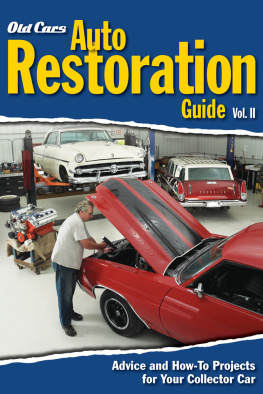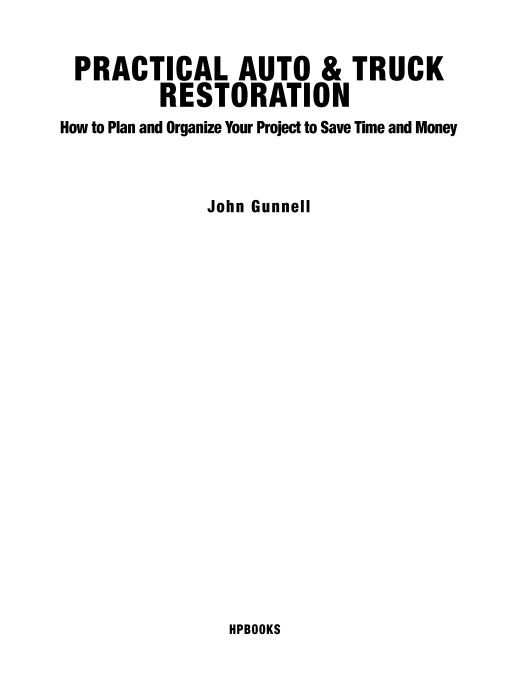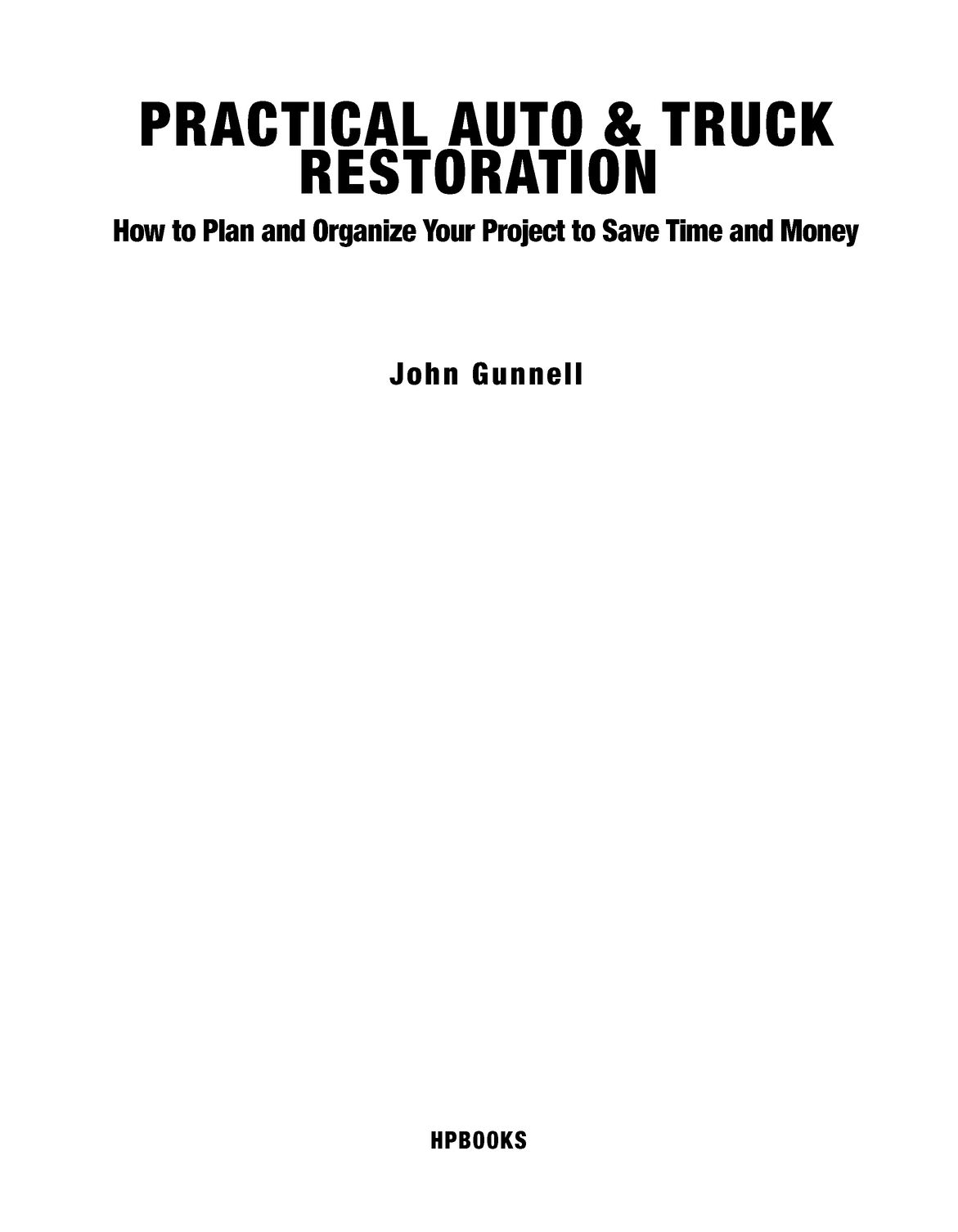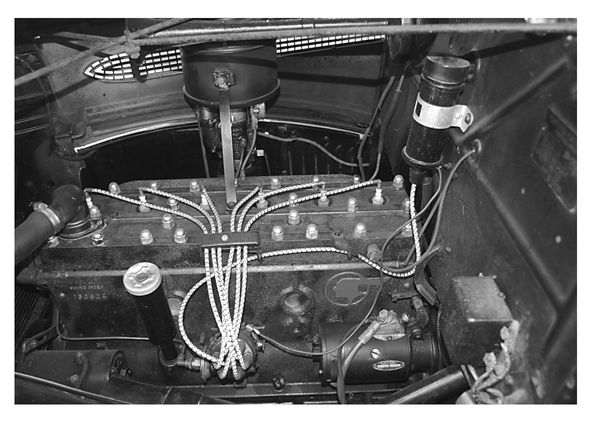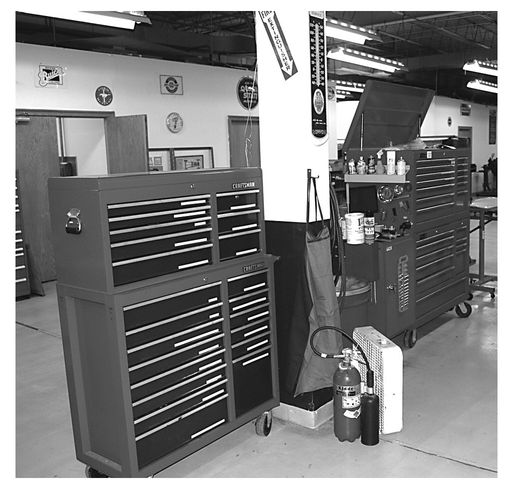Table of Contents
ACKNOWLEDGMENTS
I would like to recognize the help of the following people in making this book a reality:
Accurate Alignment, Don Barlup, Bob Bennett, Lee Bestul, Dennis and Kathy Bickford, Stefano Bimbi, Bolt Locker, Jim Carlson, Circus World Museum, Colin Comer, Joe Curto, Tom Dietz, The Eastwood Company, Eclectic Motorworks, Rex Evchuk, Fondy Auto Electric, Mike Granlund, Dave Glass, Glassworks-The Hardtop Shop, Steve Hamilton, Jesse Gunnell, Fred Kanter, Paul Katzke, Al Knoch, Jerry Kopecky, Wayne Lensing, Michael Lutfy, Bob Marx, The Masterpiece of Style & Speed, McCloskey Auto Trim, Jewel Meetz, Terry Meetz, Mid America Motorworks, Mitler Bros., Jim Mokwa, Lou Natenschon, Nisongers, Cowboy Bob Norris, Dave Pugh, Ragtops & Roadsters, Rare Parts, Marv Richer, Vince Sauberlich, SEMA, John Sloane, Jim Summers, and John Twist.
INTRODUCTION
Today, more and more people who collect cars do not have the time or skills to perform an entire ground-up automotive restoration themselves. At the same time, they do not have the money needed to hire out all the work involved. This book represents a guide on what work they can job out and what work they can do themselves.
In a real-life example, I rebuilt a set of British S.V. carburetors for an MG. Working with a mechanic friend, we did the job in my home shop. Between the cost of my time and his time, the cost of an S.V. carburetor kit, cleaning and buffing time and machine shop costs, this job ran several hundred dollars.
When all is said and done, I could have sent the carburetors to commercial rebuilders in Milwaukee or New York and had them professionally rebuilt by an expert. The job would have been completed much faster and at just slightly higher cost. In addition, their work would have been guaranteed, should anything go wrong.
The purpose of this book is to expand on this concept. It looks at the restoration of a vintage car, truck or motorcycle in a new light. Which parts of the project does it pay to job out? Which parts of the project does it pay to do yourself?
In this book, I discuss how you can play the role of general contractor in planning and organizing your restoration. I have listed many reliable places that various parts can be sent for individual unit restoration work. In the Sources section at the end, you will find listings of people and shops that specialize in unit repair services.
John Gunnell
To all of the talented shade-tree mechanics in the old-car hobby, who turn rusty relics into regal roadsters. And to Jerry Kopecky, and Dennis and Kathy Bickford: three expert restorers who help me learn the magic they do.
Chapter 1
Approaches to Classic Vehicle Restoration
During this every-nut-and-bolt restoration of a 1961 Chrysler 300 F convertible at Kopeckys Klassics, in Iola, Wisconsin, the car was completely disassembled and every single part from the car was replaced or restored.
Like everything else in life, the practical way to restore a car or truck has to have a directionor an approachto it. If you do whats called an every-nut-and-bolt restoration it is going to cost more, but virtually every piece on the car will be restored. That means you shouldnt have to worry about breaking down on your way to a show. On the other hand, you may have so much invested in the job, you wont want to drive the car.
In contrast to that, you can do a partial restoration in which you fix only the parts that seem to need fixing. This approach can give you a pretty nice car at a lower investment, but a part you didnt bother restoring might break the first time you use the restored car.
There are also other directions to go in with restoration work. You may favor strict originality over drivability enhancements or you may give more weight to using lead body filler, rather than plastic putty. There are no wrong or right choices, as long as youre doing quality work, but there are choices. Determining what approach you want to take is the first step in formulating a practical plan to restoring a classic car, truck or motorcycle.
Amateur, Professional and Hybrid
When it comes to restoring a vehicle, the only good amateur is a dead amateur. Thats a play on words of course, but the message is clear. After you restore a car, youre going to drive it on the highway, so it should go without catching on fire, it should run without blowing up and it should stop when you need to stop it. You can call yourself an amateur if youre not getting paid for the work you do, but dont think you can safely get by with amateur-quality work.
This 1936 Pontiac six-cylinder engine has had a good amateur restoration, but the red-painted Indian embossment and chrome acorn nuts are non-authentic touches. The paint is thin and not up to professional standards.
If you have never restored a car yourself and dont have the slightest idea how to start, you probably think of yourself as an amateur. However, if you are going to fix a car that drives on the road, you will have to learn both basic mechanical skills and specialized restoration techniques. Having a strong will to fix a car is just not going to make things happen. You cant wish it done, no matter how hard you squint your eyes and stamp your feet. In contrast, having the will to learn and following through on it will make the restoration hobby an enlightening one.
A large array of high-quality tools, such as shown here, is an important factor in getting a vintage vehicle restored. Neatness and organization contribute to a successful restoration as well.
The biggest problem the amateur (or novice, which is a better term) restorer faces is a shortage of confidence. For years, I spent more time reading about repairs than doing them. I gathered so much reference material, I could write complete articles about a repair without ever doing the job. That helped me as an author, but my cars never got fixed. I could diagnose problems with my car or a neighbors truck and 95 percent of the time I was right, but I didnt have the nerve to actually turn the wrenches for fear of screwing up.
This changed when I made friends with a veteran mechanic who worked on my cars once a week. In cases where I would just examine an assembly for weeks, read the shop manual, contact people on the Internet and check with a half dozen other friends, he would simply take the assembly apart. He rarely referred to a shop manual (unless he was doing something brand new to him) and he made any job seem like a simple matter of taking things apart, replacing the broken part and putting everything back together again.
One of the mechanics other strengths was that nothing scared him. When a job was a bit challenging, it became an obsession with him to conquer whatever the problem was. If we needed a longer puller to yank a brake drum off, he undid the bolts in three different-sized pullers, mated them together like one long puller and made the resulting creation work. On the other hand, he could sense when a job had no practical solution and he was willing to walk away to think about it or to find another tool.





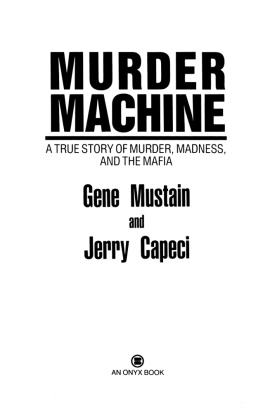
![Harry Turtledove - Worlds that werent : [novellas of alternate history]](/uploads/posts/book/79050/thumbs/harry-turtledove-worlds-that-weren-t-novellas.jpg)


